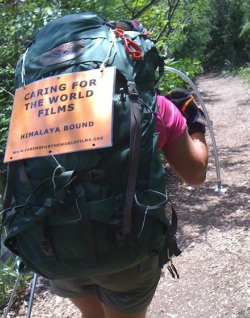
 You've booked your flights, paid your fees and are working out like crazy for your medical trek with Himalayan HealthCare. It is time to start thinking about what to pack. This, for me was almost as stressful as shooting the documentary about HHC. You will pack and repack numerous times. Himalayan HealthCare has a long list of items to consider packing. This blog is about practical items and tips you may want to consider for the Dhading trek. The Ilam treks are less demanding and the weather is fairly warm (but can be rainy) so this list may be overkill but the tips may come in handy. You can get an idea of the clothing requirements by viewing the photo galleries of HHC.
1 Comment
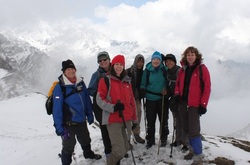 2012 HHC medical team, Nepal 2012 HHC medical team, Nepal Since the release of our latest documentary Hearts In The Himalayas”, I have been inundated with questions about specifics of the medical trek. Based on these questions and what I think I would want to know about the trek, I will do a multi-part blog on the trek covering what to pack, electronics, what to expect on the trek, trekking etiquette and travel concerns. This week’s blog will focus on booking your travel to Nepal.  The internet can be a wonderful vehicle for sharing thoughts and ideas, however, it can be an unintentional weapon used to launch shards of inaccuracies and untruths. The collateral damage of such careless postings can result in irreversible damage to those in its wake. It is not uncommon to find negative information on organizations I am researching. Positive or negative, I always search for original sourcing to confirm anything I dig up. Sometimes, the organizations I profile get rattled because I’m not simply reworking their official public relations statements. I have to remind them that objectivity is a virtue, not a vice. Confirm, confirm, confirm… always. It is fundamental to confirm facts of an interview or story and this includes blogs.  I hate writing blogs like this. I prefer positive, informative postings. Unfortunately, for the third time in recent months, Network Solutions has let us down. Without boring you with the details, let me just say that between their server being hacked (and not letting us know) which resulted in our site being hacked and the loss of our complete site content due to their "recent system upgrade", we are done with them-at least as our site host. We are kind of stuck with them as our domain holder. grrrrr. As you can see, I had to rebuild the entire site from scratch. We decided on using Weebly because it is user friendly, intuitive and the pages load much faster the Network Solutions. Best of all, it is much more affordable. Why didn't we do this the first time around? Anyhoo, I am not a web architect, let alone a web carpenter. The new site is minimalist in design with less content. Unfortunately, as I mentioned, all previous content has disappeared so, by design, we do not have much content to work with. I will be beefing the site up over the next few months and will do my best to upload images and info from our previous projects as well as recover some of the blogs. If you are using links from previous blogs, news and the like, the pages no longer exist. Instead you will find a page which will have a link to redirect to our landing page. A couple of changes you will notice include sharing options via facebook, twitter and pinterest, a comments section and subscribing to our RSS feed. Currently, we do not have the criteria page set up, but are working on it and hope to have it up by next week. Please keep checking back and reviewing the site. If you have any suggestions, send me an email. 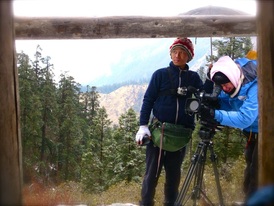 Most of you already know that Caring For The World Films is back in Nepal to continue the story of Himalayan HealthCare. HHC is a Nepalese operated NGO which serves the rural poor in the Dhading region. I produced a short trailer for the documentary Hearts In The Himalayas. The film is to scheduled for release in the fall of this year. The trek begins Tuesday, April 3rd with a team of 15 international medical volunteers who will return to the rural villages of the Ganesh Himal region of the Himalayas. I plan to shoot follow-up stories with the blacksmith teacher, the village veterinarian, Bin Maya the healthcare worker from Tipling, Pema, the dental healthcare worker, and new HHC field coordinator, Sapta Ghali, who is playing double duty as my camera assistant and Sherpa. You may remember him from last year's shoot. Sapta's assistance was priceless! So I tapped him to help out this year as well as our sound girl (boom boom) Situ Parajuli. Sapta has been very busy coordinating our shot schedule during the trek. I swear, if I could hire this guy to work for me, he would be booked for the next assignment in a New York minute.  Sweet! We Have A Sponsor!!! We are proud to join a long list of adventure explorers who are sponsored by navigation technology company Delorme. The folks at Delorme selected Caring For The World Films for a sponsorship and is providing our team with the award winning In Reach™ 2-way satellite communications and GPS device. This groovy little gadget is the first 2-way communicator on the market and will allow us to keep our followers updated via the Caring For The World Films Facebook and Twitter page with a link to our tracking map. This map will track our movements throughout the trek 24/7. Followers will be able to request location updates as well. Additionally, our team members will be able to send and receive emails and texts. Is this cool or what? Make sure to follow us on twitter or like us on the CFTWF Facebook page to follow our updates. While you are at it, check out Delorme’s website to see all the incredible navigation and communication devices they have developed. Once our gear is tracked down, I will begin testing the In Reach™ here in Kathmandu. Too bad I didn’t turn on the tracker before I packed it. In the meantime, I will be meeting with HHC founder and expedition leader extraordinaire, Anil Parajuli to catch upon the latest news with his organization, working on the production schedule and doing a fourth pass on our Nepalese translations from interviews last year. Stay connected to our adventure via Facebook and Twitter. We will post the Delorme Mapshare tracking map as soon as we can. 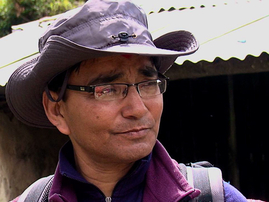 Anil Parajuli 2012 Anil Parajuli 2012 During my six-week assignment in Nepal, I spent a lot of time with the co-founder of Himalayan HealthCare, Anil Parajuli. One thing is unmistakable. The people of Nepal love this man. Not that I have ever walked the streets with Bono (let alone met him), walking through the streets of Kathmandu and rural villages with Anil was pretty close to it. People of all walks of life wave and call out his name. When I mention my observation, he laughs it off and tells me I am overly dramatic. “No one is that important here,” he says. I beg to differ. He has been named an Ashoka Fellow, recognized as one of the top fifty personalities in Nepal four times and has received numerous awards and has been offered fellowships at Harvard for his efforts. 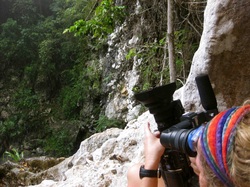 Belizean rain forest Belizean rain forest Our return trip to the Mayan villages in the Toledo District of Belize was quite an adventure. Professors Peggy Gill and Wes Hickey from the University of Texas led the way into Santa Teresa, Silver Creek, Blue Creek and Jalacte where we met with principles of the schools to check on the implementation of methods learned in the August workshops and to meet the new Peace Corps volunteers embedded to assist. We had time to explore the rain forest and caves to shoot beauty shots for the project with the help of Professor Hickey and guide Sylvano Sho. 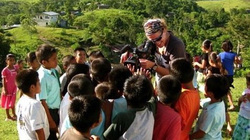 Children of Jalacte surround Debi Lang Children of Jalacte surround Debi Lang JALACTE Day one we visited this small village in far west Belize near the disputed region of the Guatemalan border. We were sad to learn that several children died this school year as result of drinking contaminated water. The principal was very proud to show off the school, but unfortunately we arrived too late to observe the classroom instruction. As class ended the kids ran from their classrooms and surrounded me while I was shooting footage of the village. 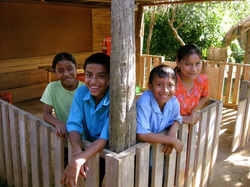 Children we interviewed In Santa Teresa Children we interviewed In Santa Teresa SANTA TERESA My heart remains in Santa Teresa, a village located near the Southern region of Belize. The children were very eager to share their Mayan culture with us. The children preferred to interview me, asking questions about life in America, snow and sports . Another family allowed us to tour their home and led us on a long trek deep into the rain forest to see their corn field. We are told it takes 7 months to cultivate a single crop. 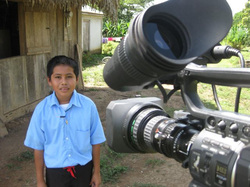 Silver Creek We managed to make in time to shoot quite a bit of classroom footage and even interviewed the children. The children were extremely focused on their studies but made time to play baseball at lunch. 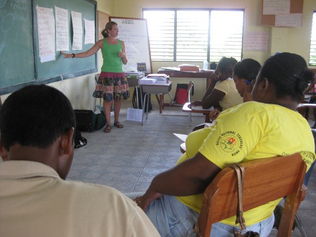 TFABB workshop in Belize TFABB workshop in Belize And the shoot begins.... We are based in Punta Gorda with the TFABB team, who is conducting training classes nearby for the three hundred or so Belizean teachers and principals of the Toledo school district. Every day begins with the long but manageable walk to the school. The school where the workshops are held is right on the coast. The beautiful ocean view makes the long hot days tolerable. In the distance you can see the coast of Guatemala. I am impressed with the warmth that the Belizean people have towards the TFABB volunteers. Hugs, cheers and even a few tears fill the room where hundreds of teachers and principals sign up (and pay) for seminars and clinics conducted by TFABB volunteers and specially trained locals. I over hear many conversations in which the local teachers discuss how previous clinics have significantly improved their teaching skills and the learning experience for their students. I can't wait to get into the villages to speak directly to the students and teachers. 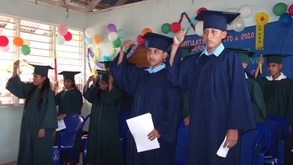 Village of Santa Teresa graduation Village of Santa Teresa graduation The coursework is not what Kathi Dolan refers to as "chalk talk", where one drones on at the chalk board for hours. This is a completely different experience. It is a completely interactive class in which the attendees participate in mock teaching exercises. For principals, it is focused on problem solving and teacher engagement exercises. Clearly the most important aspect of the TFABB mission is that the Belizeans decide what THEY want learn based on the needs of their students. TFABB does not come in and tell them what they need to learn. The mission is completely collaborative with the Belizean government, the education leaders and the local teachers and principals. The reason this is an important project is because the impoverished Toledo district , which is mostly populated by Mayan Indians and Creole settlers, historically has been ignored. Prior to TFABB, if the government bothered to collect data from the district, scores were so low they did not register and very few students made it past a year or two of school. Today, the students have some of the highest scores and graduation rates in the country. 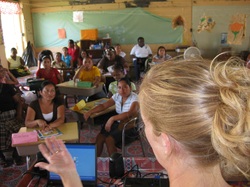 Anne Marshall with preschool teachers Anne Marshall with preschool teachers Founders, Kathi Dolan, Anne Frahn and Jennifer Johnson focused the mission on the teachers. "It's easy to want to just work with the kids, but what happens when a volunteer group leaves? Nothing is passed onto the teachers to improve education" says Frahn. "When you invest in the teachers, you impact the entire community for the better. Kathi and Jennifer are teachers themselves and understand the challenges they face. Who better to help them?" All believe the collaborative nature of the mission as well as the consistency of the program has been key to its success. The goal is to fully train an army of teachers to take over the TFABB model. The program is tweaked as the needs change. In addition to the training, TFABB provides books and supplies to the district. The teachers and principals pay for the training as well as the essentials supplied by the team. 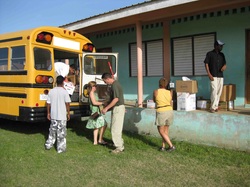 Volunteers unload books in Silver Creek Belize Volunteers unload books in Silver Creek Belize Just traveling around the district reveals how much this organization and its volunteers have impact the community. People stop them on the street almost giddy explaining to the TFABB volunteers how excited they are to be participating in a clinic. Many ask them to visit their classrooms to see for themselves how well the instruction is working. 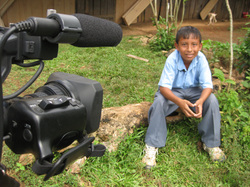 Back To Belize CFTWF will return to Belize in Late 2009 or mid 2010 to continue shooting. Our next assignment will be in the villages to highlight life of the rural Mayan population and the progress TFABB is making there. We will meet local principles Juan Chub and Geraldo, as well as the teachers and school children of their villages. To see more photos of our trip to Belize visit our facebook page. 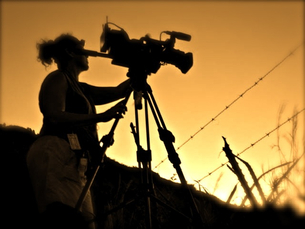 Director Debi Lang In San Marcos Honduras Director Debi Lang In San Marcos Honduras Sometimes You Just Have To Do It Yourself Hi Folks! This is my first ever blog. Don't see the point in it, but everyone tells me I HAVE to have one.... apologies in advance if I bore you to tears. Thank you in advance for even being interested in CFTWF. I had to go into recovery mode when our web designer bailed on us. I googled "How to build a website for free" and You Tube popped up. You know what? It is not so hard. If I can do it anyone can. So this is it. This is my first website. It is not fancy schmancy but it gets the job done. It is a work in progress so you will find the Swag (merchandise for sale) and a few other things with the standard "Coming Soon" info. I also plan to add a lot more content as well as google earth maps of each site we visit, rss news feed, pay pal for donations. I also am excited about the Behind The Lens gallery. This will have photographs, writings, videos and other art forms as well the behind the scenes story by artists who also happen to be volunteers for the organizations CFTWF profiles. I am thrilled to showcase Jan Kohler, a local Honduran high school student who volunteered as a translator for Cape CARES in 2009. I look forward to interviewing Jan when I return from Belize or he returns from his European tour. (Photo courtesy of Dr. Gordon Pettit) 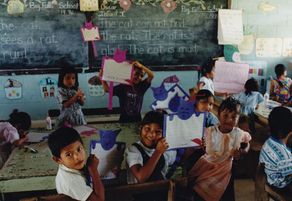 Children in village of Silver Creek Belize Children in village of Silver Creek Belize On To Belize Speaking of Belize, I am headed there on Saturday with Teachers For A Better Belize (TFABB). I am very excited to be going with them on their mission. Unfortunately I am not a teacher so I won't be able to help them with that, but I certainly can help them set up and tear down. BTW this is an organization that has been around for about 14 years. A group of teachers who volunteer to teach local teachers (which I call teaching squared, get it? .. geez I crack myself up ) successful methods of instruction, they provide books and supplies, construct libraries and schools and a lot of other things which I will get into in the video. Check out their website www.tfabb.org (Photo courtesy of Kathi Dolan) 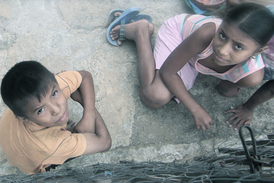 Back From Honduras I am very excited about completing Return To San Marcos. I am honored to partner with Honduran high school student Luigi Breve Mazzoni on this project. The documentary is told from his perspective in his voice. He has volunteered with Cape CARES since 2008. Luigi was very moved by his first volunteer experience and jumped at the chance to participate in Return to San Marcos. He was also featured in the first documentary Road To San Marcos. I am hoping Luigi will be interested in doing future documentaries with CFTWF. He is a natural. This is my second project for Cape CARES. You can view the first video on the projects page. I have to say... anyone who is interested in volunteering for a humanitarian organization should consider Cape CARES. I cannot say enough about them. I liked working with them so much I plan to go back as a volunteer every year. They trained me to be a dental assistant (kudos to Dr. Pettit and Dr. Theodos) Check out their website and tell them I sent you. www.capecares.org One more thing...Check out the Facebook page for Caring For The World Films and become a fan. The more fans we have the higher our ranking and the more exposure our profiled organizations receive. Okay time to pack for my trip! See you next month. |
Debi Lang
Debi Lang is a humanitarian and adventure traveler who never leaves home without her camera, well worn hiking boots and groovy headbands. . Archives
January 2022
|

 RSS Feed
RSS Feed